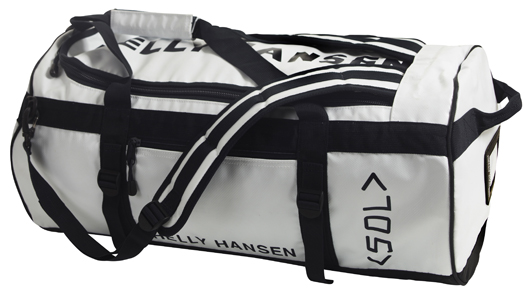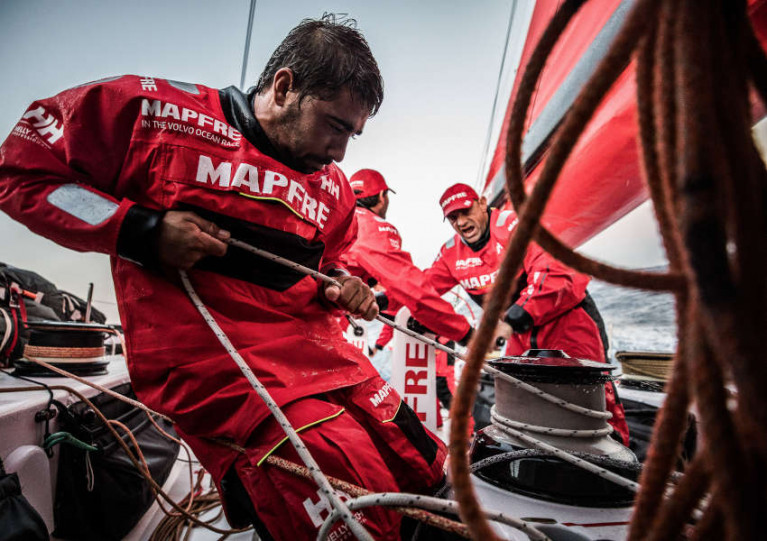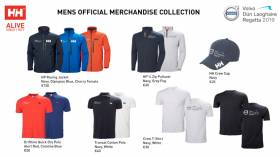Displaying items by tag: Helly Hansen
Win a Helly Hansen Crew Midlayer Jacket with Viking Marine
Viking Marine have teamed up with Helly Hansen to give away a Crew Midlayer Jacket — a favourite for sailors on and off the water.
The Crew Midlayer Jacket is serious in protecting you from wind, insulating you from the chill onboard and ashore, and drying out super fast if you do get a soak.
To be in with a chance to win, follow Viking Marine on Instagram, like the competition post, tag three friend and share on Instagram Stories.
The winner will be announced on Sunday 14 February — it could be an extra-special Valentine’s Day for someone you love!
World-leading sailing apparel brand Helly Hansen has signed on as official clothing supplier to The Ocean Race.
With over 140 years of knowledge, experience and expertise in developing performance-driven apparel, the Norwegian-based brand is trusted by professionals around the world..
Helly Hansen has also developed lasting partnerships with the sport’s top athletes and has been an official apparel sponsor for teams in The Ocean Race since the initial event nearly 50 years ago.
“Since 1973, The Ocean Race has been demanding the best of everyone who participates,” says race chairman Richard Brisius.
“As sailors we not only love to promote the highest levels of competition on the ocean, but we are also working to promote and implement solutions towards restoring ocean health.
“In Helly Hansen, we have a partner who is equally dedicated to performance and to being a leader in contributing to a healthier ocean.”
‘We are honoured to collaborate with The Ocean Race, a partner who also holds sustainability as a true core value, in restoring ocean health’
Helly Hansen chief executive Paul Stoneham added: “No other sailing race in the world is as challenging and rigorous as The Ocean Race, attracting the sport’s top professionals who are pushed to their limits in extraordinary conditions.
“Helly Hansen is committed to working closely with professionals to develop gear that they can trust no matter what conditions they face.
“We are honoured to collaborate with The Ocean Race, a partner who also holds sustainability as a true core value, in restoring ocean health.”
As high-performance racing boats have raised the bar for technical sailing gear, Helly Hansen delivered jackets with improved Helly Tech waterproof, breathable fabric and stow-away facemasks for added protection.
In the 2014-15 edition, the brand outfitted the all-women’s Team SCA, featuring innovative, gender-specific designs that are still used across existing collections.
Today, Helly Hansen’s Ægir offshore collection is the direct result of having worked closely with The Ocean Race teams through the years.
Last refined with the MAPFRE team in the 2017-18 race, the Ægir line is the culmination of five generations of design improvements, using the sailors’ feedback to create and develop gear they can trust to withstand even the harshest environments.
The next edition of The Ocean Race will start a year later than scheduled in October 2022, as previously reported on Afloat.ie.
Viking Marine’s August Sailing Wear Sale Is Now On
Viking Marine’s Pavilion shop might be closed today (Sunday 25 August) owing to the road closures for IRONMAN 70.30 Dun Laoghaire.
But the new clothing sale which started on Friday continues this week, with big bargains to be had from top sailing wear brands.
Save 15% off all Helly Hansen and Rooster clothing — and up to 50% on certain items — both in store and online.
Viking Marine Taking Pre-Orders For Volvo Dun Laoghaire Regatta Official Clothing Collection
The official clothing collection from Helly Hansen for the 2019 Volvo Dun Laoghaire Regatta is now available for pre-order from the event’s retail partners Viking Marine.
And what’s more, all items ordered by Friday 14 June come with free screen printing for boat names and numbers to give that personal touch for you and your crew’s regatta campaign.
For details of the full range of men’s and women’s racing jackets, pullovers, polos, T-shirts and hats, and how to order, click HERE.
Helly Hansen extends its clothing range for RNLI professionals
No stranger to protecting the globe's outdoor professionals from some of the world's harshest environments, Helly Hansen has worked in conjunction with the RNLI, to design and develop a range of products guaranteed to keep the lifeguards comfortable, dry and warm when facing the unpredictable conditions seen throughout the year on Britain's beaches.

From LIFA patrol shirts and Polartec fleeces to waterproof, breathable jackets and smocks, Helly Hansen is passionate about producing technical clothing to protect the RNLI lifeguards - dedicated to risking their lives to save others.
New kit supplied to the RNLI lifeguards include
The RNLI Poncho is an overhead protection garment inspired by Helly Hansen's renowned workwear collection. The Poncho is quick and easy to remove in times of emergency, and features a 2 layer HellyTech construction, making it the perfect waterproof, breathable outer layer. It covers the knee and seat area, for full body protection, ensuring the lifeguards remain dry in all weather conditions.
The Track Pant is ideal for providing additional warmth on colder days. Made from Polyester, these red pants are quick drying to prevent the lifeguards from feeling the cold and wet.
The RNLI has over 800 lifeguards patrolling over 150 of the UK's beaches throughout the year. In 2009 the beach lifeguards saved more than 120 lives and assisted over 15,000 people. It is believed that two out of three people in the UK will visit a UK beach at least once during 2010, but every year over 7,000 people find themselves in serious difficulty either in the water or on the beaches
Win a Helly Hansen Holdall Every Day with Afloat!
Win! Win! Win! We're giving away a Helly Hansen Holdall (pictured below) each day for ten days but you've got to be quick, three are gone already! Enter our facebook competition HERE. All you have to do is complete the form on the page with the correct answer. It couldn't be easier, just hurry! Thanks for your support of Ireland's boating magazine.

New Kit Range from Helly Hansen
Under the Technical range, the collection builds upon the brand's fabric and technological expertise, utilising HH Cool fabrics and LIFA Stay Dry Technology on the inside for dryness, with a Polyester exterior to evaporate sweat and cool the skin. In addition, a new series of highly breathable, windproof jackets have been designed to help athletes to regulate body temperature in cool conditions.
The Outdoor Technical collection is a professional-grade the Odin series of outerwear, insulators and base layers expands with the introduction of the Odin Lightweight Jacket. This jacket is designed to meet the tough specifications of mountain guides.
The brand also includes a versatile rainwear collection of lightweight, durable Dakota and Anchorage Jackets for men, and Aspen and Vancouver Jackets for women.
The Helly Hansen range in Watersports, has earned the trust and confidence of professional and recreational sailors for generations. In the Spring, the new Hydro Power series of dry tops, waterproof smocks, jackets, pants and sportswear for sport boat enthusiasts will also be launched.
In the Footwear Watersports range the new Watermoc grips slick rocks and decks and guards the feet from contact with unseen sea life beneath the surface.
Helly Hansen blends its nautical roots with progressive style in the Latitude 90 Leather for men and women. The Latitude 90 works perfectly when worn with denim, chinos or shorts.
'Ask and Embla' Helly Hansen's statement fashion collection goes soft with waterproof, breathable softshell coats for urban adventures. The collection of stylish sweaters, shorts, pants and footwear has been designed in clean Scandinavian styles to complement the range.
Four Championships (and a Mega Party) Planned for Dun Laoghaire 2011
A number of classes have already committed to run open championships within the regatta including the Wayfarer UK and Irish Nationals, the J109 Open Championship, the SB3 Open Championship and a return match of the Irish Sea Championship in J80s between Ireland and Wales. The race management team headed up by Con Murphy, aided by the usual ocean of wonderful volunteers, are working to facilitate this to ensure the kind of quality race management and organisation that will ensure the success of these championships.
The non-spinnaker fleet was the largest fleet in the Regatta in 2009 and is expected again to top the numbers and provide great racing for large boats with a smaller crew.
The regatta combines the wonderful waterfront facilities of all 4 Dun Laoghaire clubs and includes support from other clubs in the Dublin area including Howth. There will be a full on entertainment programme for all participants and many more with the continued support of many of the sponsors of 2009 which included Volvo Cars, Dublin Port, Dun Laoghaire Rathdown County Council, The Royal Marine Hotel, Helly Hansen, Dubarry and many more.
One of the highlights of the regatta are the Ladies Lunches which will again be held across a number of the clubs on the Saturday. Top Fashion, great food, a dash of style accompanies by the glass of champagne are the order of the day. All these at a very reasonable price reflecting the realities of today's tightened purse strings.
There will be more announcements in the coming weeks.
For more information visit www.dlregatta.org or event secretary Ciara Dowling at [email protected]


































































